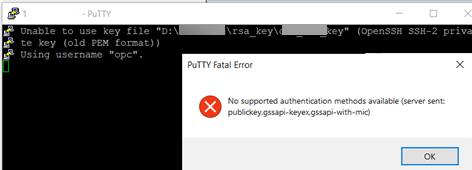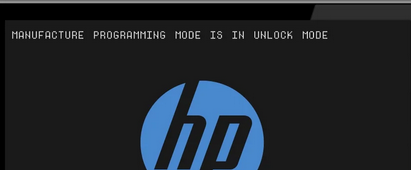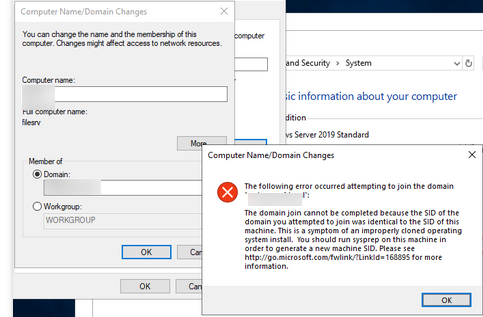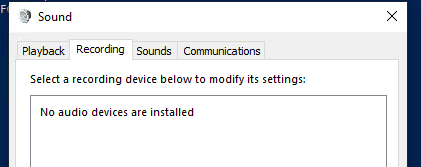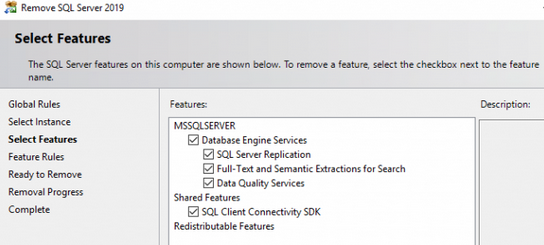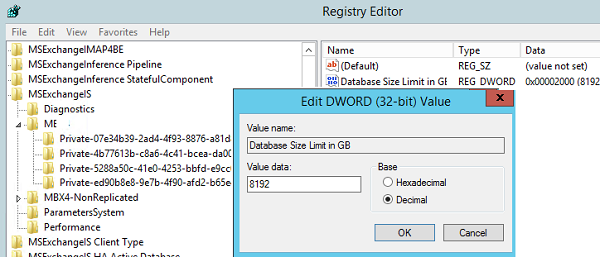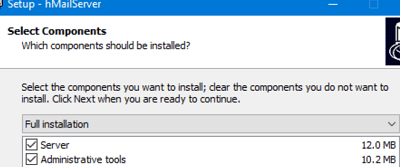When you connect to a remote SSH host from Windows using the PuTTY client, you may receive an error message about an incompatible private key format:
Category: Windows
A separate *.ps1 extension is used for PowerShell script files. To run PS1 scripts, users must open a PowerShell console, cmd, or code editor (such as PowerShell ISE or VSCode). If you want your users to be able to easily run your PowerShell scripts, you can convert PS1 files to the .exe executable file format.
Continue reading “Converting a PowerShell (PS1) Script to an EXE File”
After replacing the motherboard or updating BIOS firmware (flashing) on HP laptops using the HP BIOS Configuration Utility, a message may appear each time the computer boots after the POST stage:
Continue reading “Removing ‘Manufacture Programming Mode is in Unlock’ on HP Laptop”
A number of errors can occur when you try to join a Windows machine to an Active Directory domain. Most of them are fairly typical and can be fixed quite easily, as the cause of the problem is shown right there in the error window.
Continue reading “Fix: Unable to Join Computer to Active Directory Domain”
Windows PowerShell 5.1 introduced two built-in cmdlets that allow you to copy and paste text and/or files from the Windows Clipboard from the PowerShell command line.
Continue reading “Using the Clipboard (Copy/Paste) in PowerShell”
In this article, we’ll show you how to configure microphone and audio redirection in a Remote Desktop (RDP) session.
Continue reading “Enable Remote Audio and Microphone in RDP/RDS Session”
In this article, we’re going to look at a number of ways that you can uninstall a Microsoft SQL Server instance on a Windows computer. This article applies to all supported versions: Microsoft SQL Server 2019/2017/2014/2012.
Continue reading “How to Completely Uninstall Microsoft SQL Server?”
The maximum and optimal size of the mailbox database in Exchange Server 2019/2016/2013 varies depending on the edition:
Continue reading “How to Check and Increase the Mailbox Database Size on Exchange Server?”
Netcat (or nc) is a classic Unix networking tool that allows you to make TCP and UDP connections, receive and send data, check open ports on a remote computer, test firewall rules, etc. In this article, we will look at some typical examples of using the netcat CLI tool.
Continue reading “How to Use Netcat (nc) Command with Examples?”
hMailServer is a free open-source email server for Windows environments. hMailServer – can be installed on any edition of Windows (on desktop versions from Windows XP to Windows 11 or on Windows Server 2003-2022). hMailServer is a compact and powerful server, the distribution of hMailServer is only about 5 MB (!!!). E-mail messages are stored on the local hard drive in the MIME file format.
Continue reading “hMailServer: Installing a Free Email Server on Windows”

